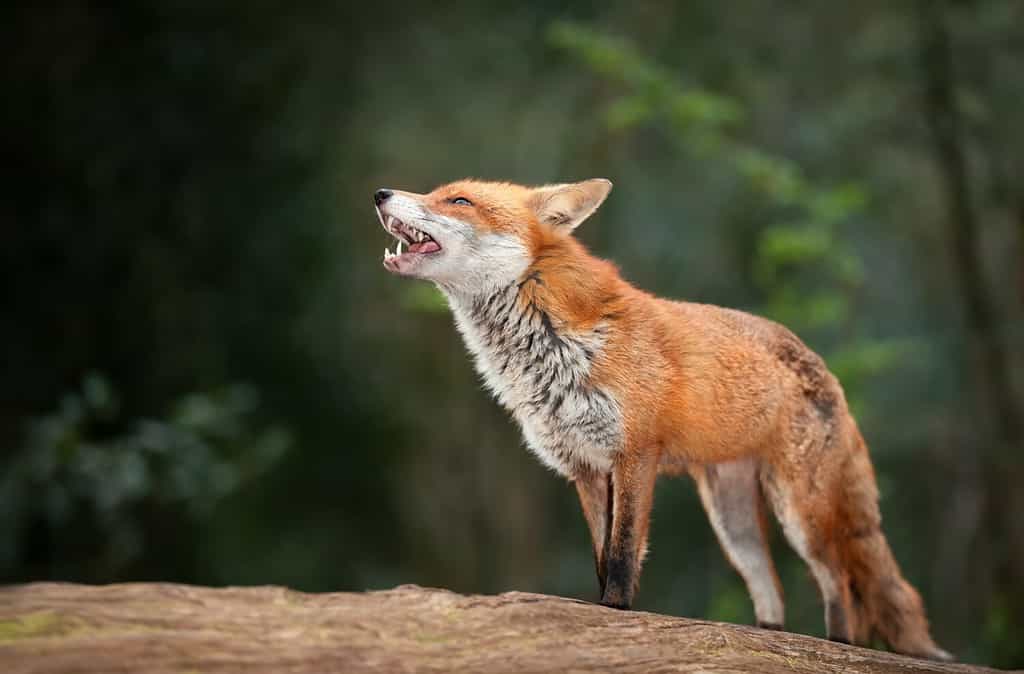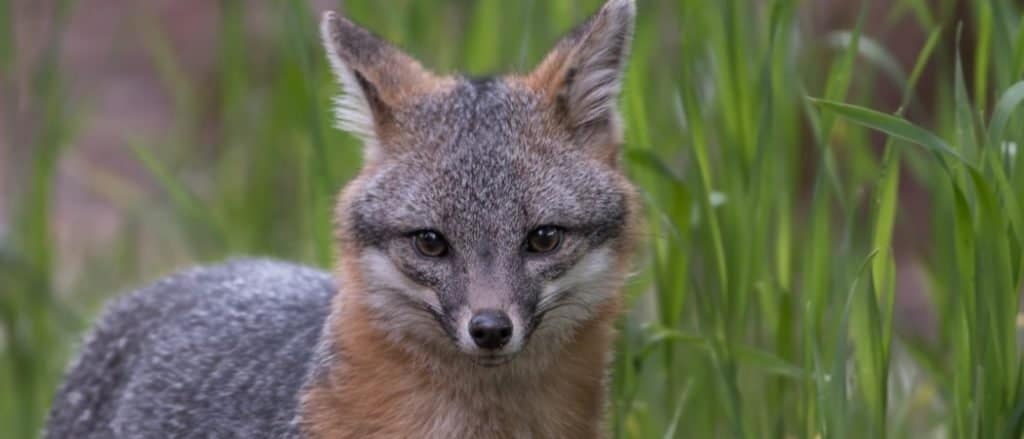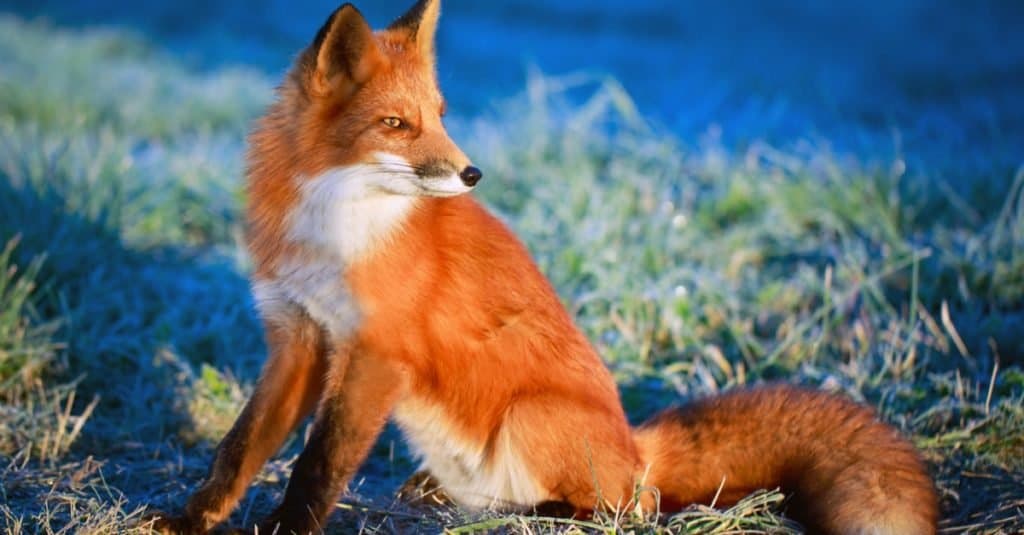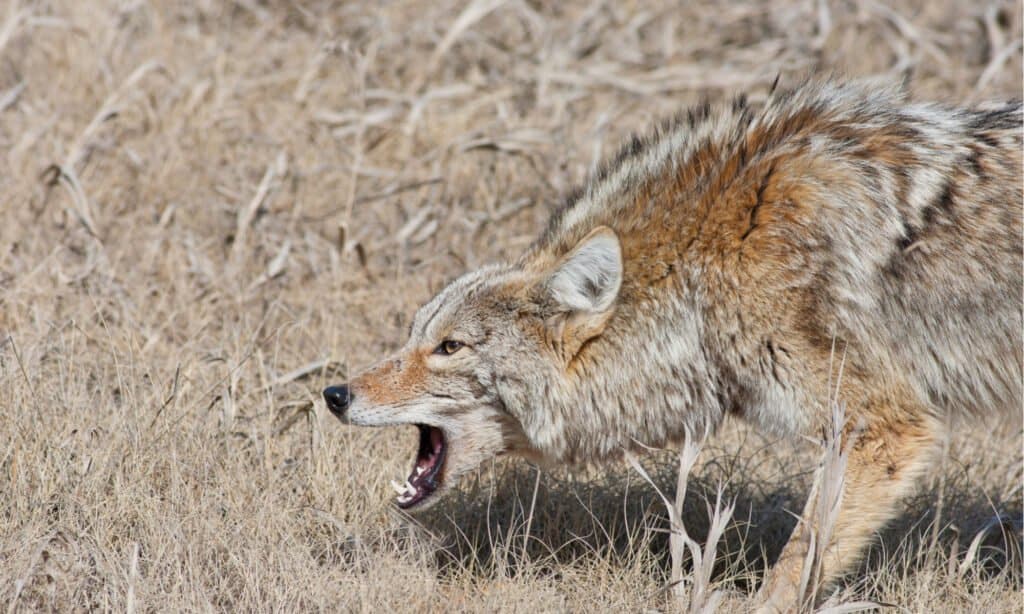“Are there foxes in Indiana?” is a common question among nature lovers who desire to explore the mysterious Indiana forests.
The state of Indiana is a nature-rich region with lakes, rivers, dense forests, and a variety of wildlife. It’s part of the great lakes region, and foxes are an integral part of the Indiana ecosystem. North America is home to four fox species: the red, gray, arctic and kit. You can find two of the four in Indiana — the red and gray fox.
They’re closely-related to coyotes and are super intelligent and sharp in hearing, smelling, and sight. This article will delve into all you need to know about foxes living in Indiana, their characteristics, habitat, diet, and what to do if you have them coming to your home.
11 Interesting Facts about Foxes
Here are 11 brief but riveting facts about foxes you probably didn’t know. They:
- Typically use Earth’s magnetic field to hunt their prey.
- Run 30 miles per hour.
- Can hear a ticking watch that is over 36 meters away, as well as underground mice.
- Only have one mate their entire life, making them monogamous mammals.
- Exist in 23 distinct species.
- Are excellent parents — Foxes reproduce once a year and do not abandon their offspring until they can fend for themselves.
- Have gender specific names. A male fox is known as a dog fox, while a female is a vixen.
- Are very intelligent and are popular for their sneaky trait.
- Make more than 40 different sounds.
- Wrap their tail to keep warm during cold seasons.
- Can be domesticated.

Foxes are super intelligent and sharp in hearing, smelling, and sight.
©Giedriius/Shutterstock.com
Types of Foxes Found in Indiana
Foxes are small to medium-sized animals, usually the size of a mature cat. They belong to the Canidae family, along with dingoes, domestic dogs, wolves, coyotes, and jackals. There are 23 species of foxes which are divided into six genres. The largest ones are the real foxes with 12 species, followed by the South American foxes (Lycalopex), with six species.
Indiana State is home to red and gray foxes. But despite their relationship, they possess distinct qualities that set them apart. Read on to learn more about these foxes.
1.Red Fox (Vulpes vulpes)
The red fox is the largest fox species. It has a sleek and slender body with a height of 18 to 26 inches and a length of 36 to 42 inches. Its skull resembles a dog’s but with a thinner structure. It has a smaller muzzle with distinctively prominent and pointed ears. Regarding their weight, adult red foxes generally range between 8 and 24 pounds, with males slightly bigger than the females.
As the name suggests, the red fox has a rusty-red fur coat with a white chest and underside. However, they can have other colors like black, silver, grey, or brown. The lower leg plus the area behind the ears usually are black. The red fox has a long bushy tail which takes 40% of its total length.
Red foxes are omnivores. Their primary foods are mice, voles, rabbits, and squirrels. Furthermore, they also feed on insects, birds, reptiles, amphibians, and fruits to complement their diet. With the help of their sharp sense of smell, sight, and hearing, they can spot food even from a distance. They employ various hunting methods like pouncing, stalking, and chasing to catch their prey.

The red fox has a rusty-red fur coat with a white chest and underside, however, they can have other colors like black, silver, grey, or brown.
©iStock.com/Rejean Bedard
Breeding for Red Foxes in Indiana
Breeding occurs in winter, typically between the end of December and early March, providing a captivating spectacle of courtship rituals. Pairs engage in playful behavior, chasing and grooming each other as they establish a bond.
Following a gestation period of around 52 days, the female red fox gives birth to a litter of pups, usually ranging from 4 to 6, in a secluded den. The parents work diligently as a team to care for their young, with the male often providing food for the nursing female and growing pups.
The pups usually stay in the den until they’re five weeks old when they go out to play. At eleven to twelve weeks, they start joining their parents for hunting. As the pups mature, they acquire essential skills from their parents, including hunting techniques and social behaviors, ensuring their successful transition to adulthood. The puppies will leave the family during fall and start breeding in spring.
Social Behavior of Red Foxes
While red foxes are primarily solitary hunters, they exhibit solid social bonds within family units. A typical family unit consists of a monogamous breeding pair and their offspring from previous years. As the pups reach adulthood, they disperse to find their territories, contributing to genetic diversity. Red foxes communicate via vocalizations like barks, screams, and howls that are also crucial for establishing packs and maintaining social bonds within their family units.
2. Gray Fox (Urocyon cinereoargenteus)
Like the red fox, the gray fox is small to medium-sized with a long body but shorter legs. It has a distinctive and unique appearance that distinguishes it from the red fox. Its coat is predominantly silver gray with a brown-reddish tone behind its ears, under the tail, inner belly, neck, and inner legs.
Notably, the gray fox has a black tail tip that effectively contrasts the rest of its fur. Its muzzle, throat, and cheeks are white. Gray foxes measure 12-17 inches tall and approximately 32-36 inches long (tail included). They’re known for being slightly smaller than red foxes. When fully grown, their weight falls between 7 and 13 pounds – males being bigger than females. One standout difference between gray foxes and other canids like coyotes or domestic dogs is their ability to climb trees which causes people to think they belong to the cat family.
Gray foxes are omnivores; they typically feed on plant and animal matter. Gray foxes’ primary food is small mammals such as rabbits, mice, rodents, and squirrels. Moreover, they also hunt birds, reptiles, amphibians, and insects. Lucky for them, they can climb trees to pick fruits, berries, and nuts, unlike the red fox, which must wait for the fruits to drop.

The coat of the gray fox is predominantly silver gray with a brown-reddish tone behind its ears, under the tail, inner belly, neck, and inner legs.
©Hayley Crews/Shutterstock.com
Breeding Season for Gray Foxes
The breeding season for gray foxes usually starts in January to March, two to four weeks after the red foxes. The gestation period of a gray fox is similar to other foxes, which is around 51-53 days. Female gray foxes give birth to a litter of 4 to 5 pups. Gray foxes build their den in dense bushes, trees, or rock crevices.
Social Behavior of Gray Foxes
Gray foxes exhibit a primarily solitary nature, often maintaining a solitary lifestyle outside the breeding season. However, they are not entirely antisocial and can form pair bonds during the mating season, engaging in brief but meaningful social interactions.
Like red foxes, communication among gray foxes occurs through various vocalizations, including barks, screams, and howls. The difference is that the gray fox barks less often and is louder when it does.
Where To Find Foxes In Indiana
Gray foxes are hard to see because they tend to be reclusive and are more active at night. If you’ve seen a fox in Indiana, it was probably a red fox. However, don’t rule out the possibility of spotting the gray fox since both species live in various habitats across Indiana.
Where to Find Gray Foxes
Gray foxes are native to Indiana and are superbly adapted to woodland habitats. They’re most prominent in Indiana’s lush deciduous forests, mixed woodlands, and brushy areas.
Gray foxes thrive in several parts of Indiana where they can build a suitable habitat. However, the decline in their natural habitats is threatening their existence. Unlike red foxes, the gray species can climb trees, hence their preference for the woodlands. They have sharp claws and muscular limbs with remarkable agility to ascend tree trunks, seeking refuge and occasionally utilizing tree hollows as dens.
Where to Find Red Foxes in Indiana
Red foxes are not native to Indiana. The Indiana Department of Natural Resources report indicates European settlers intentionally introduced Red foxes during the early 20th century. Although the exact time is yet to be confirmed, red foxes are believed to have existed from the late 1800s to the early 1900s.
The introduction of red foxes to Indiana served multiple purposes. One significant reason was the interest in sport hunting and the demand for their exquisite fur. Red fox fur was highly sought after then, making it an attractive commodity. Additionally, red foxes were considered a thrilling game animal for hunting enthusiasts, further motivating their introduction.
The individuals responsible for the introduction likely obtained red foxes from larger regions within the United States or other countries. These foxes were then released into suitable habitats throughout Indiana, encompassing various environments such as farmlands, forests, and grasslands. Being adaptable creatures, red foxes quickly established populations and thrived in their new surroundings. Their presence gradually expanded across the state as they took advantage of their diverse habitats.
With time, red foxes became a familiar sight in Indiana. Renowned for their reddish fur, bushy tails, and nocturnal behavior, they successfully integrated into the local ecosystems. Today, red foxes are considered a naturalized species in the state, representing an enduring legacy of human intervention in Indiana’s wildlife composition. Red foxes love woodland edges, grasslands, and prairie as they provide open hunting grounds.

Today, red foxes are considered a naturalized species in Indiana.
©DragoNika/Shutterstock.com
Can Foxes Live Near Homes?
Both red and gray foxes are common in agricultural landscapes, rural and sometimes urban outskirts. The agricultural-rural area has plenty of food, from fruits in the garden and leftovers in the dustbin to stealing chicken from the chicken coop. The near-human habitat is also crucial because their biggest predator, the coyotes, avoid coming close to human settlement.
Predators And Threats of Foxes In Indiana
Bigger predators like coyotes and bobcats, and aerial predators like owls and hawks are huge threats to foxes, particularly young or inexperienced ones. Losing their habitats due to human actions such as fire, deforestation, and diseases also put their populations at risk.
However, foxes adapt, survive, and do well in certain areas. They demonstrate the ability to adjust their behavior and diet in response to seasonal changes and the availability of resources.
Red foxes are spread across several parts of the world. In Indiana, the estimated population of the red fox is above 10,000. Unfortunately, the gray fox population is declining, but there is an initiative to study and discover the real cause of these declines.
Foxes have dense fur coats that provide insulation during harsh winters, ensuring survival in challenging weather conditions. Red foxes have also honed their burrow skills, utilizing dens for shelter, raising their young, and seeking protection from predators and extreme weather events.

Bigger predators like coyotes are huge threats to foxes
©Brenda Carson/Shutterstock.com
How To Tell Apart Red and Gray Foxes
Because red and gray foxes live near each other in Indiana, It is common for people to confuse them, despite their physical differences. Here’s a table outlining their differences to help you tell them apart the next time you spot them.
| Characteristic | Red Fox | Gray Fox |
|---|---|---|
| APPEARANCE | Red-brown coat | Silvery gray coat |
| WEIGHT | 8- 24 pounds | 7-13 pounds |
| HEIGHT | 18-26 inches | 12-17 inches |
| LENGTH | 36-42 inches | 32-36 inches |
How to Remove Foxes From Your Home
As discussed above, foxes often live near homes or urban centers. In some cases, they can even dig burrows on private property. Despite their fear for people, foxes tend to pop in and out of homes mainly in search of food. Before inflicting any form of harm on them, find out what they’re doing first. Who knows? They might just be passing by and heading to their hunting ground.
If you find a fox burrowing on your lawn, it could be due to extreme weather or someone in your home has been feeding them. Foxes are not dangerous. They rarely attack people unless when severely provoked. You’re better off removing them from your home since they can still transmit rabies, wreak havoc in your fruit garden, and eat small animals like chickens and rabbits.
Here are eight safe ways to remove foxes from your property:
- Scare them away. Foxes fear people and will run on seeing one approaching.
- Place capsicum-based repellent on the burrow entrance.
- Erect a fence in your garden. Remember that foxes can dig, so the fence should go deep into the soil.
- Cut the grass and bushes around your home.
- After confirming no pups or foxes are inside the den, close the den with soil or stones.
- Spray a mixture of garlic and chili pepper in your yard to keep them off. They also hate the smell of fox urine.
- Lock garbage bins and wash them after disposing of the garbage.
- Get in touch with a professional. Removing the fox in a humane way is most important. Getting a professional to do it is a great option.
Where Can You Find Foxes In Indiana?
Indiana is home to red and gray foxes from the Canidae family. The two are found in forests, woodlands, and grasslands across Indiana. The gray fox is a climber and prefers woodlands and forests, while the red fox prefers grasslands to ease hunting. However, foxes are also seen in urban and rural areas due to human actions like deforestation and fires, food scarcity, and escaping predators like coyotes.
Foxes are not dangerous but can be a menace by eating small farm animals and fruits. Remember to use humane methods to remove a fox from your property. You can also contact a pest removal professional if you need help.
The photo featured at the top of this post is © Giedriius/Shutterstock.com
Thank you for reading! Have some feedback for us? Contact the AZ Animals editorial team.







